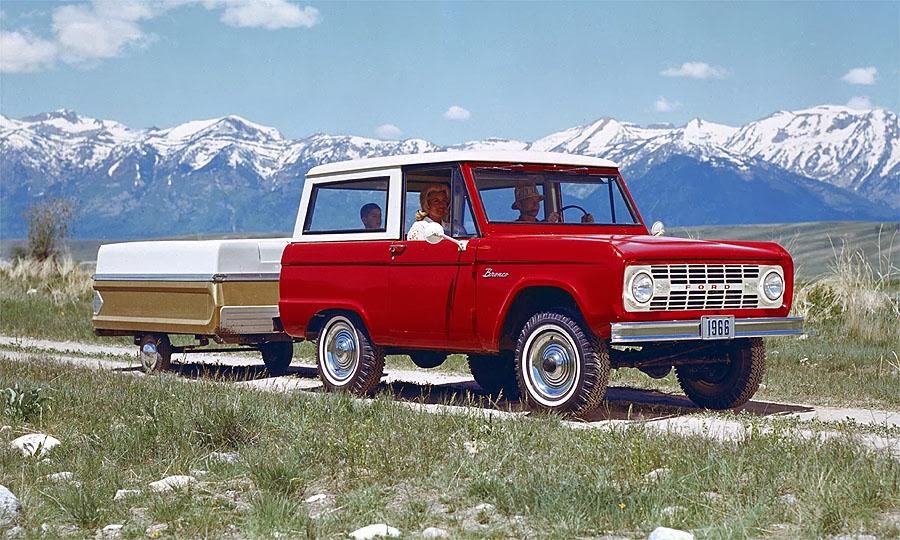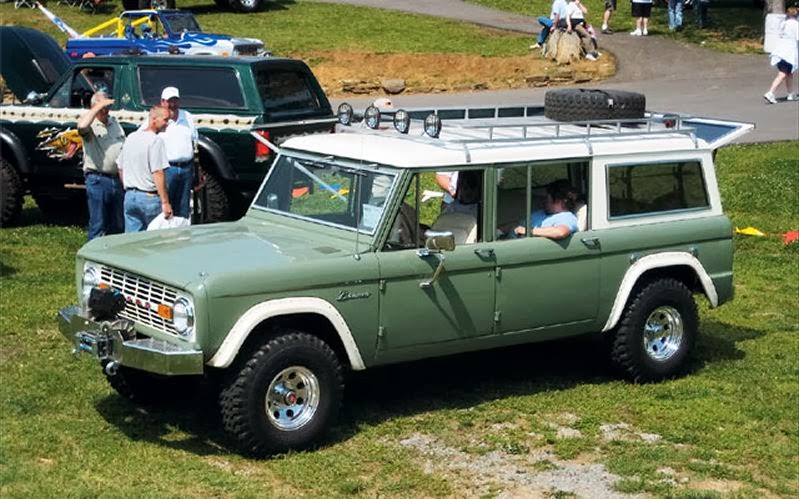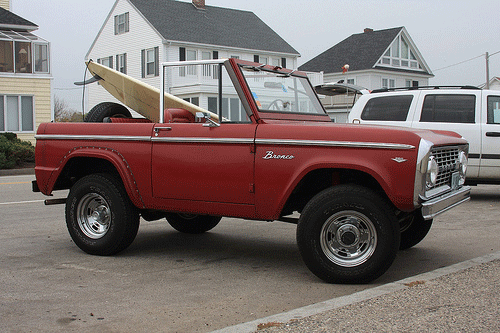The early Ford Bronco enjoys a status today among 4x4 fans and classic car devotees that borders on becoming a cult. With a simple design and solid build, excellent handling both on and off road and raw V8 power you have a vehicle that lends itself to many modifications. The early models are now more than 40 years old, the esteem of the classic 1966-1977 Ford Bronco will no doubt continue to grow over the coming years. If you are considering buying an early Ford Bronco then the information here should help you choose the model year that is right for you.
When buying an early Ford Bronco as with the purchase of any older or classic vehicle the usual advice applies to buy the best you can afford with your budget and remember to include ongoing running costs for maintaining an ageing, if modern classic.
Introduced to the motoring public in August 1965 the Ford Bronco was to compete against the Jeep CJ-5 and International Harvester Scout. Initially the early Broncos were very basic; options including power steering and auto transmission were absent. The engine department offered a 105 BHP, 170ci six cylinder - a variant from the Ford Falcon range. Transmission was the three speed manual with a column mounted shifter. Exclusive to the initial models was a tall shifter with a J-handle style ball mounted atop.
The Ford Bronco range was available in wagon, roadster and half cab variations however the roadster proved unpopular and ceased production in 1968. Brakes were drums all round, rear axle was a Ford 9" (up to 1971) and a Dana 30 front axle. The gas tank held 14.5 gallons as standard with a second tank as an optional extra holding an additional 11.5 gallons. The 1966 year model had the following optional extras to choose from: winches, tachometer, tow hooks, trailer hitch, snow plow kit, warn freewheeling hubs and air lift front auxiliary springs. Production for the 1966 model year came to 23,700 units.
1967,1967 saw the Sports Package launched including headlamp and tail lamp bezels, bright finished horn ring, windshield drip, side window frames, cigar lighter, chrome-plated bumpers, front guards and grille (with red "Ford" letters attached to the grille) and 15" wheels trims. In addition to this a bright trimmed headliner and vinyl floor matt were included along with instrument panel trim and tailgate handle. Also new were a dual master cylinder with a split hydraulic system and self adjusting brakes with back up lights and an 11.5 gallon spare fuel tank. 14200 models were produced in 1967.
1968,New in 1968 were front locking hubs and new design inside door handles and window crank knobs along with curved ends on the bumpers and side marker reflectors. 1968 was the last year for the 289ci V8. 16600 models were produced in 1968.
1969,First off the 302ci V8 replaced the 289ci V8, two speed electric wipers were introduced, parking lights with an amber lense replaced the white lense and the steering stabilizer was to become standard. Aluminum door panel trim and a pleated parchment interior were added to the Sport Package and when the rear seat was ordered this came with a rear floor mat. Production levels rose to just under 21,000 models.
1970,The Sports package became a model in its own right instead of a package. The most obvious modifications were the new position of the side marker lights and reflectors. This year saw a reduction in the capacity of the main and spare gas tanks from 12.7 gallons and 10.3 gallons. 1970 saw 18450 Broncos built.
1971,Changes included the Dana 44 becoming the standard Bronco front axle, remote control left hand outside mirror, new headliner for the pick-up and a heavy duty radiator. 1971 saw the limited edition Baja Bronco by Bill Stroppe and Associates introduced - they took a Bronco wagon and made the following modifications: roll bar, front and rear dual shocks, fender flares, larger Gates Commando tires, rubberized steering wheel, bumper braces, automatic transmission, power steering, nameplate and special paint order (red, white, blue, black and white). In total around 650 Baja Broncos were made between 1971 and 1975. Just over 19700 Broncos were made in 1971.
1972,Mid Year changes saw the ranger Package introduced with new striping, argent grille, color coded front and rear pile carpets, deluxe wheel covers, tire cover with "Ranger" lettering, cloth insert bucket seats, fiberboard headliner and wood grained door trim panels. The gas tank reduced in size once again to 7.5 gallons. The T-handle shifter was removed as was the "302" badge V8 front fenders. Production rose to 21,100 units.
1973,This year saw the introduction of the C-4 auto transmission and power steering as an option, the J-Handle transfer case shifter was also introduced. These efforts to modernize the Bronco against stiff competition helped the sales for 1973 achieve just fewer than 21,900 units.
1974,The numbers of Broncos that rolled off the production line hit 25,800 and in this year a new emissions package was introduced for the Californian Broncos making the 200 cid six cylinder engine and 4.11 axles obsolete. Changes were made to the J-handle shifter mechanics and the transmission selector was now lit.
1975,Stricter emissions regulations saw the introduction of unleaded fuel engines, catalytic converters and it is rumored that cam timings were restricted in 1975 to assist with emissions. Sport and Ranger models were fitted with the F-Series steering wheel, ride heights adjusted and an 800 watt engine block heater was available as an option. Lowest ever production numbers were seen of 13,125.
1976,A Special Decor Group had a matt-black finish grille, tape stripe, side window frames, bright windshield molding and wheel covers. Mechanically long awaited power assisted front disc brakes were fitted, rear brakes were also upgraded, Y steering linkage introduced and a front anti sway bar. Production numbers rose slowly to just over 15,200.
1977,The last year for the early Bronco saw the introduction of a heavy duty 9" rear end housing, gas tank doors replaced exterior caps, rear marker lights were now mounted vertically and a 14.4 gallon and 8 gallon gas tank were made in plastic. This is possibly the best of the early models as it includes most of the previous year features. Some previously standard items, such as a passenger's side seat and padded instrument panel, were made optional this year. In its final year of production, 14,546 Broncos rolled off the assembly line before the large Bronco took over in 1978.

















